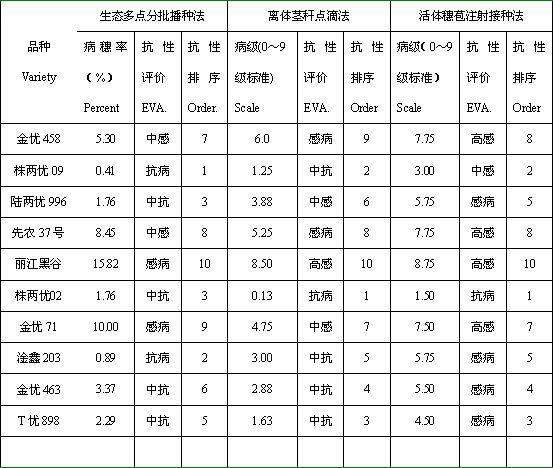Method for identifying rice blast resistance of rice
A rice blast and resistance identification technology is applied in the field of disease resistance screening in the process of breeding rice varieties and new varieties. It can solve the problems of differences in heading dates of different varieties, not being widely used, and difficulties in identifying panicle blasts. The experimental results are true and credible, the effect of optimizing the concentration and inoculum volume, and accurate grading standards
- Summary
- Abstract
- Description
- Claims
- Application Information
AI Technical Summary
Problems solved by technology
Method used
Image
Examples
Embodiment Construction
[0014] Cut the rice stalks in the big bud stage from the paddy planting field, cut the long stalks with a length of about 7 cm, the upper part of the stalk joint is 2 cm, and the lower part is 5 cm, and 3 stalks are put into a petri dish of double-layer filter paper (per Add 1mL of sterile water to the dish); wash the cultured spores of Magnaporthe grisea with sterile water, adjust the concentration to 106 / ml, and drip 8μL of spores at the stem node of each stem with a pipette gun suspension. Put the petri dish into a light incubator at 26°C, and cover it with a transparent film to maintain the humidity in the petri dish, and culture it alternately with light and dark for 10 days to investigate the disease condition. The grading standards are as follows: Level 1: lesion length less than 0.5 cm; level 2: lesion length 0.6 cm to 1.5 cm; level 3: lesion length greater than 1.5 cm; survey disease level The ones with grade 3 are susceptible varieties, and the ones with grade 3 are...
PUM
 Login to View More
Login to View More Abstract
Description
Claims
Application Information
 Login to View More
Login to View More - R&D
- Intellectual Property
- Life Sciences
- Materials
- Tech Scout
- Unparalleled Data Quality
- Higher Quality Content
- 60% Fewer Hallucinations
Browse by: Latest US Patents, China's latest patents, Technical Efficacy Thesaurus, Application Domain, Technology Topic, Popular Technical Reports.
© 2025 PatSnap. All rights reserved.Legal|Privacy policy|Modern Slavery Act Transparency Statement|Sitemap|About US| Contact US: help@patsnap.com

